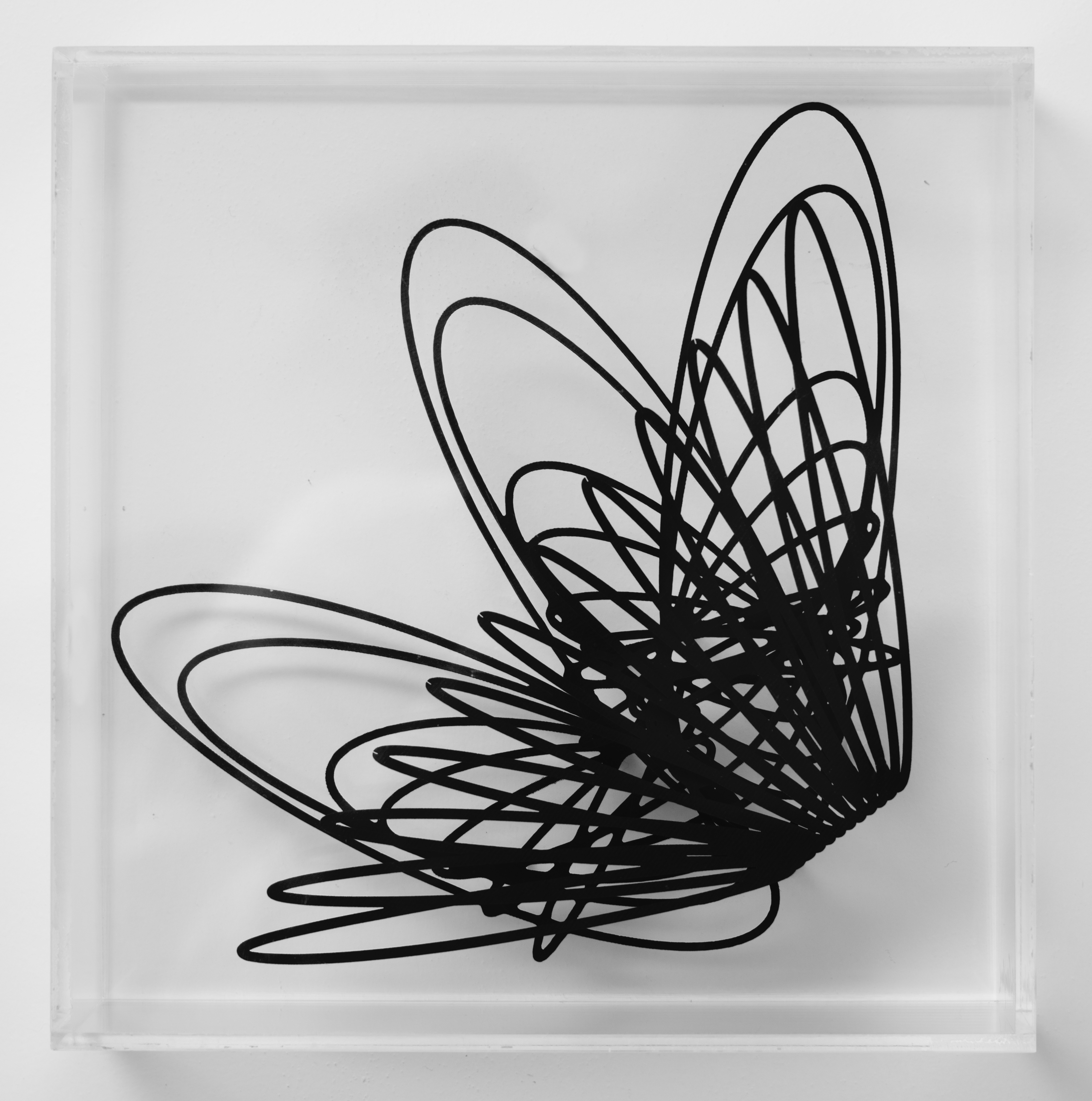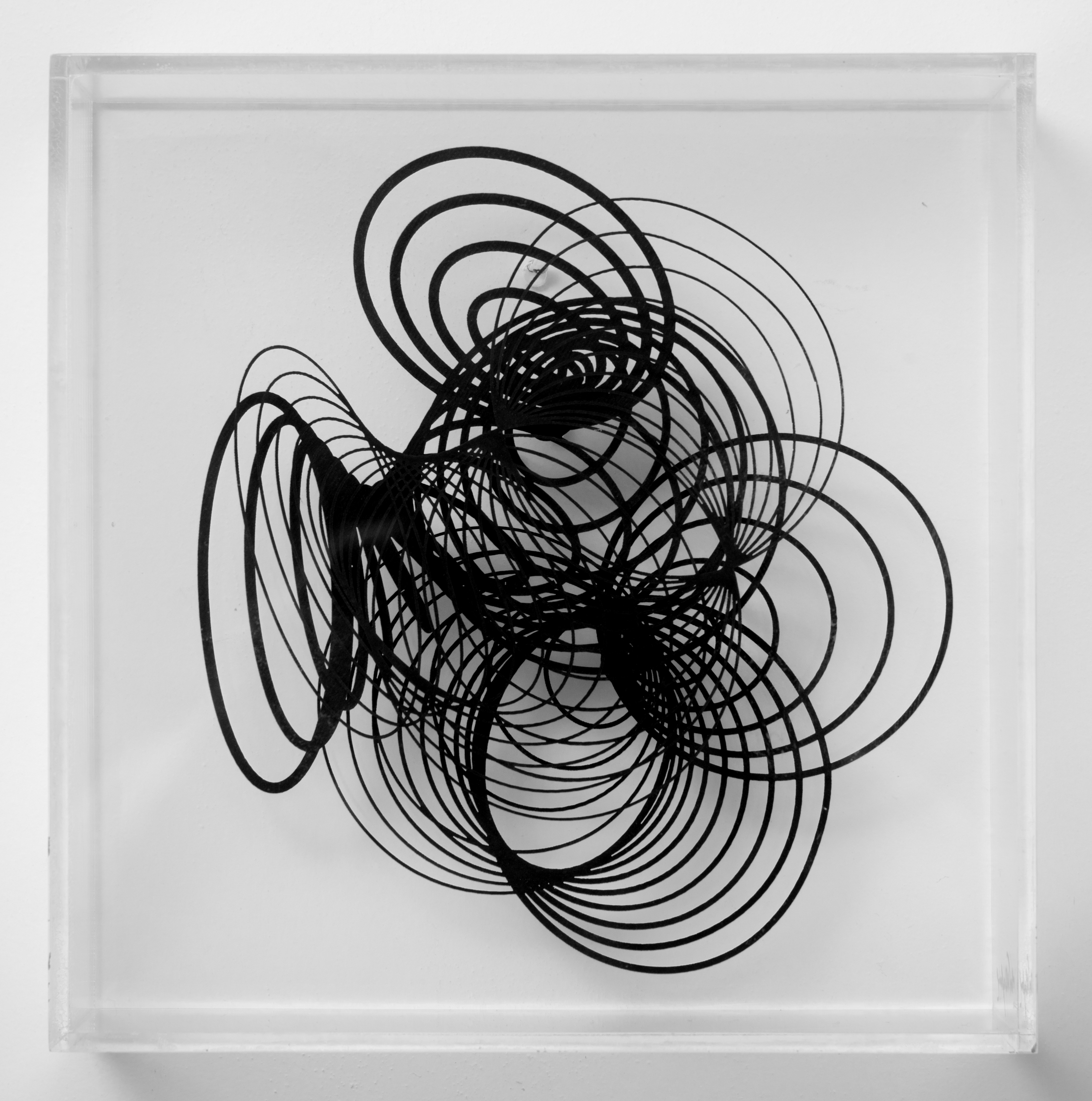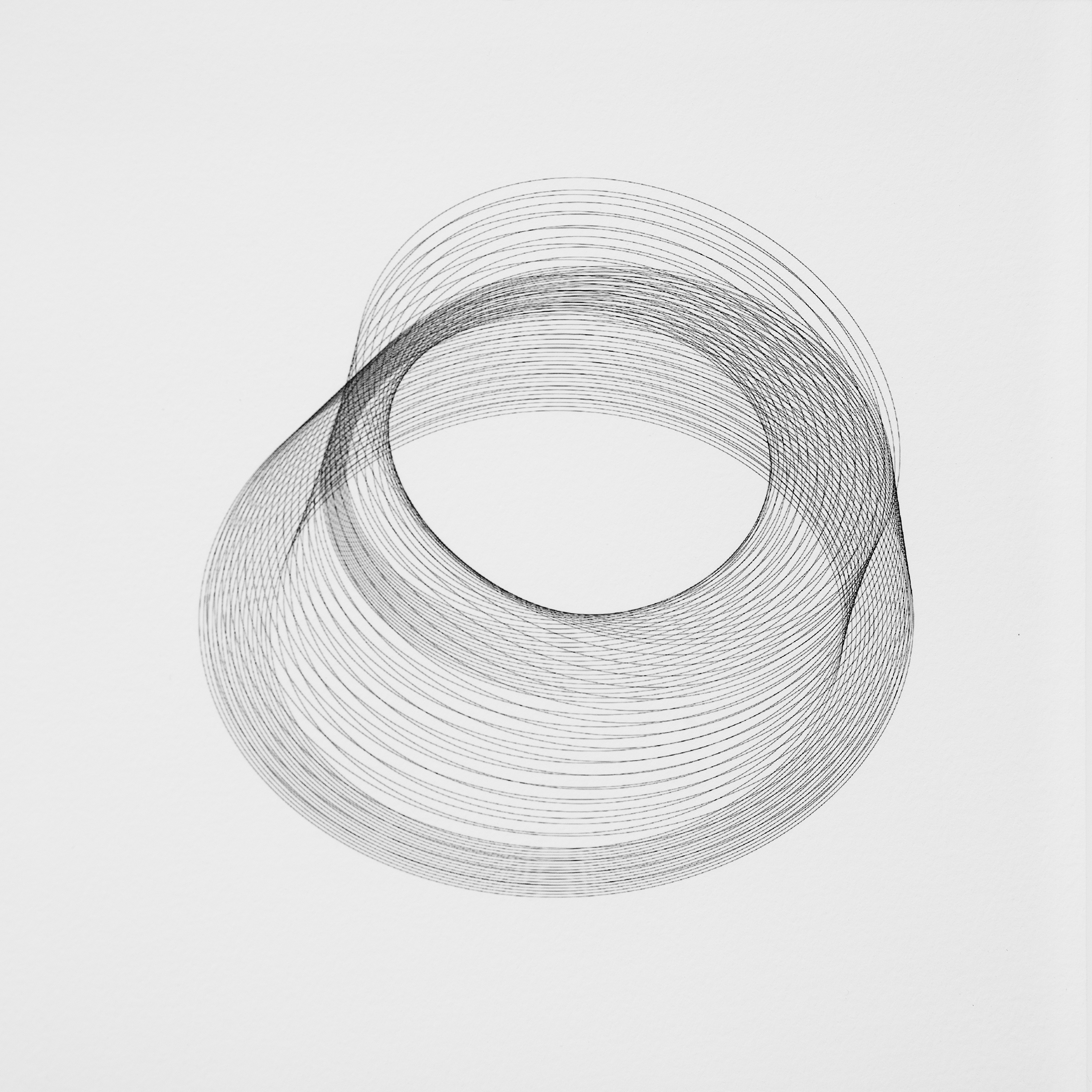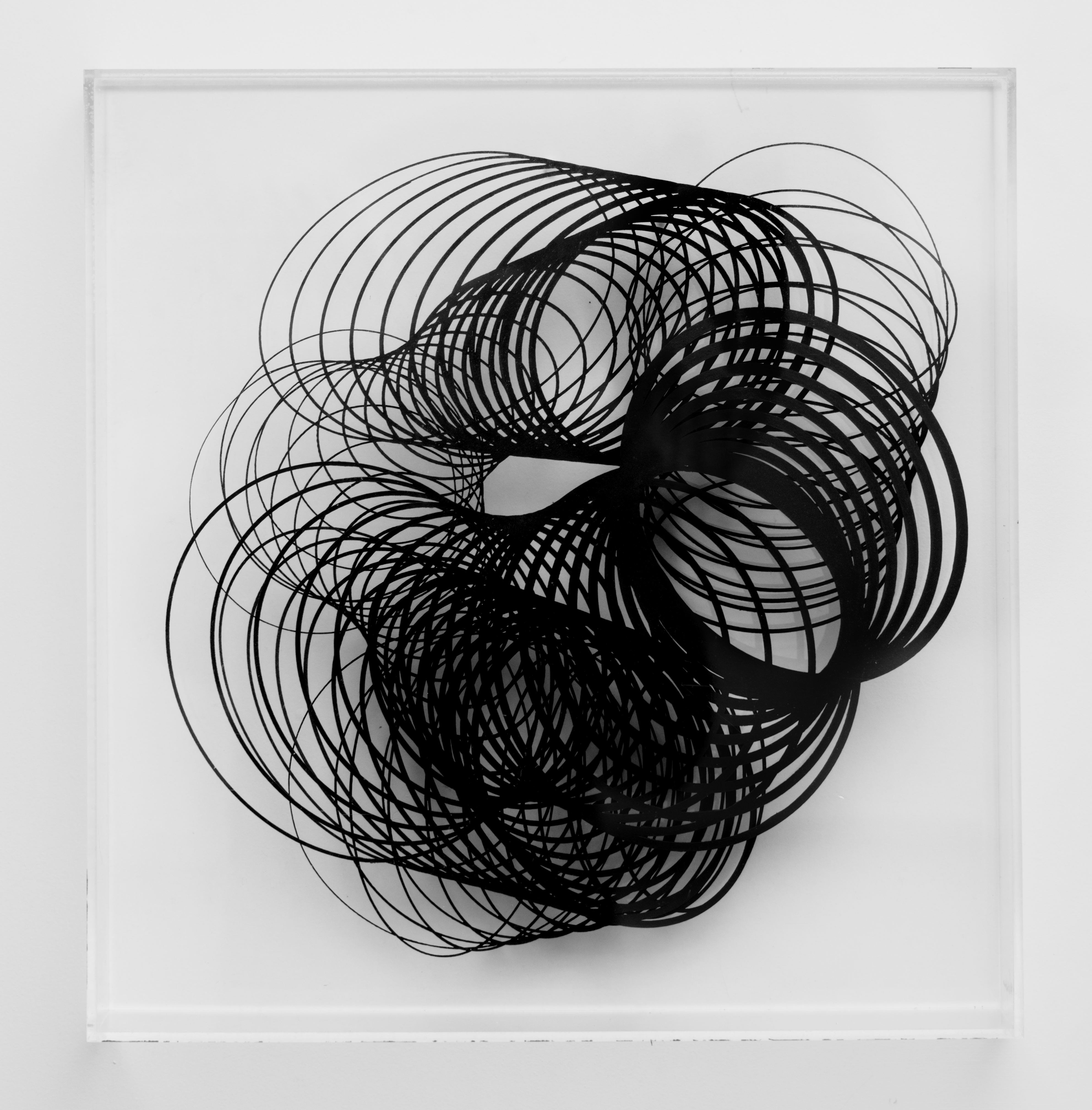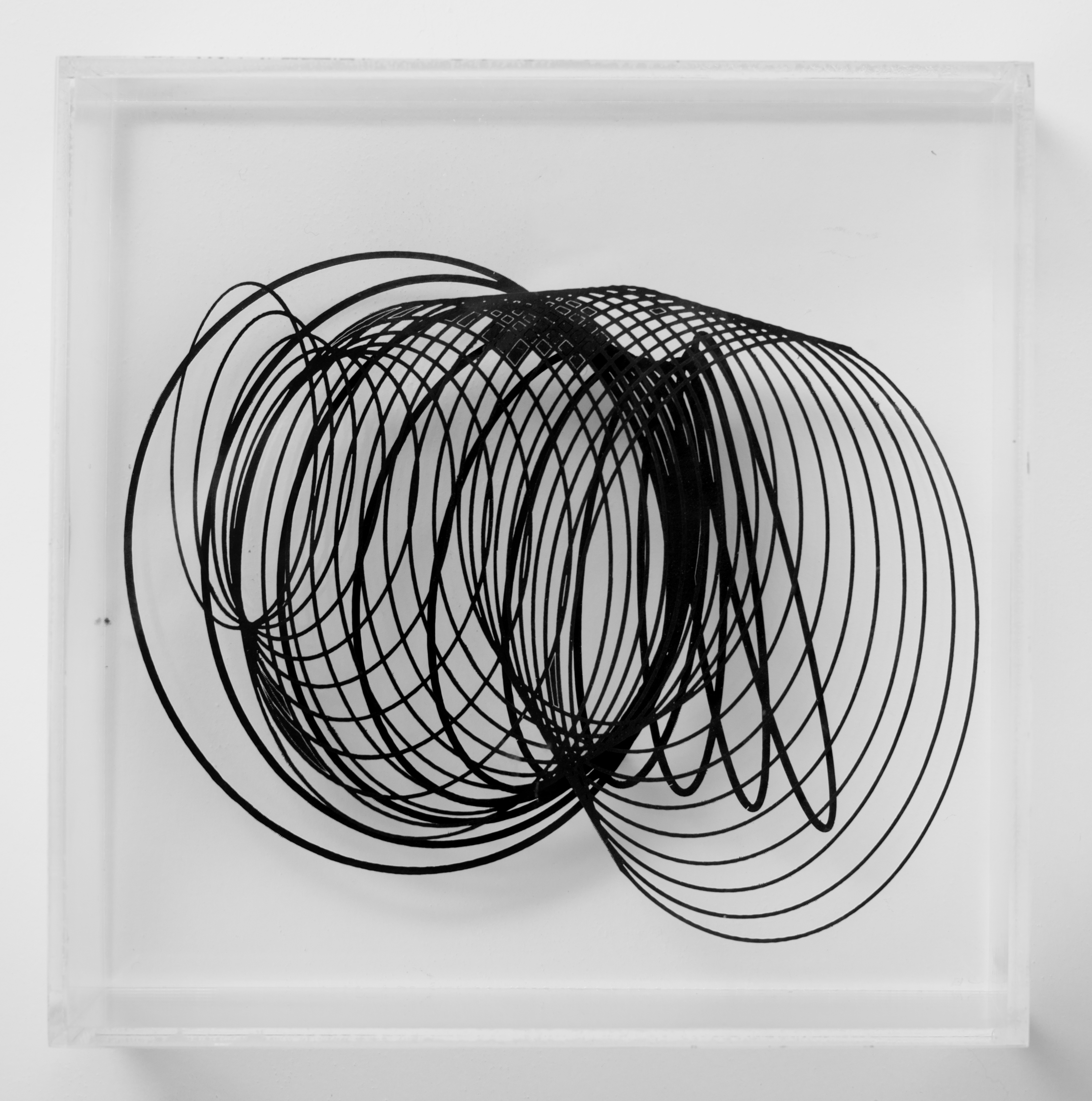Resonancias
Galería Quadro, San Isidro. Curaduría Rodrigo Alonso (2015)

En
la célebre película de Orson Wells, El ciudadano (1941), el magnate de los
medios de comunicación, Charles Foster Kane, pronuncia una extraña palabra
antes de morir, que pone en funcionamiento la investigación periodística que
articula toda la trama. Significativamente, al momento de su deceso, no había
nadie en su habitación que pudiera haberla escuchado. Así, ese vocablo
(Rosebud), cuyo sentido nunca llega a revelarse a los investigadores (pero sí
al espectador), y que remite a un recuerdo de infancia del protagonista, actúa
como un señuelo, como una verdadera excusa narrativa, a través de la cual,
Wells construye uno de los filmes más exquisitos de la historia del cine.
El trabajo reciente de Mariana Villafañe parte de un recuerdo de su infancia, pero que en vistas de los resultados formales podríamos caracterizar también como un señuelo. Según cuenta la propia artista, cuando era una niña, su padre abandonó el hogar familiar; entre los objetos que dejó detrás de sí había un tocadiscos con el vinilo del álbum Wish You Were Here, de Pink Floyd. Como el Rosebud de El ciudadano, este objeto y esta canción son los motores de una investigación estética que explora las posibles traducciones del sonido al terreno visual, y que en su desarrollo, va dejando detrás la anécdota para focalizarse en la representación de patrones visuales y la materialización poética de la memoria.
Rodrigo Alonso
Curador
El trabajo reciente de Mariana Villafañe parte de un recuerdo de su infancia, pero que en vistas de los resultados formales podríamos caracterizar también como un señuelo. Según cuenta la propia artista, cuando era una niña, su padre abandonó el hogar familiar; entre los objetos que dejó detrás de sí había un tocadiscos con el vinilo del álbum Wish You Were Here, de Pink Floyd. Como el Rosebud de El ciudadano, este objeto y esta canción son los motores de una investigación estética que explora las posibles traducciones del sonido al terreno visual, y que en su desarrollo, va dejando detrás la anécdota para focalizarse en la representación de patrones visuales y la materialización poética de la memoria.
Rodrigo Alonso
Curador
In the famed film Citizen Kane (1941) by Orson Welles, communications media magnate Charles Foster Kane pronounces a strange word just before dying, setting an investigation by the press into motion that articulates the plot of the entire story. It is significant that at the moment of his death, there is no one in the room who could have heard it. For this reason, though investigators never manage to determine what was meant by the word (Rosebud), the spectator does know that it refers to a childhood memory on the part of the main character. It operates as a decoy, a true excuse for the narrative, by way of which Welles constructs one of cinema history’s most exquisite films.
Mariana Villafañe’s recent work has a childhood memory as its point of departure, but in light of the formal results attained, we might similarly characterize it as a decoy. As the artist herself explains, her father left their family home when she was a little girl; among the objects he left behind, there was a record player and a vinyl record of Wish You Were Here by Pink Floyd. Like the Rosebud from Citizen Kane, the object and the song are the motivation for an aesthetic investigation that explores different possible ways of translating sound in visual terrain. As this advances further forward, the specific anecdote falls back in order to focus attention on the representation of visual patterns and the poetic materialization of memory.
Rodrigo Alonso
Curador
Mariana Villafañe’s recent work has a childhood memory as its point of departure, but in light of the formal results attained, we might similarly characterize it as a decoy. As the artist herself explains, her father left their family home when she was a little girl; among the objects he left behind, there was a record player and a vinyl record of Wish You Were Here by Pink Floyd. Like the Rosebud from Citizen Kane, the object and the song are the motivation for an aesthetic investigation that explores different possible ways of translating sound in visual terrain. As this advances further forward, the specific anecdote falls back in order to focus attention on the representation of visual patterns and the poetic materialization of memory.
Rodrigo Alonso
Curador

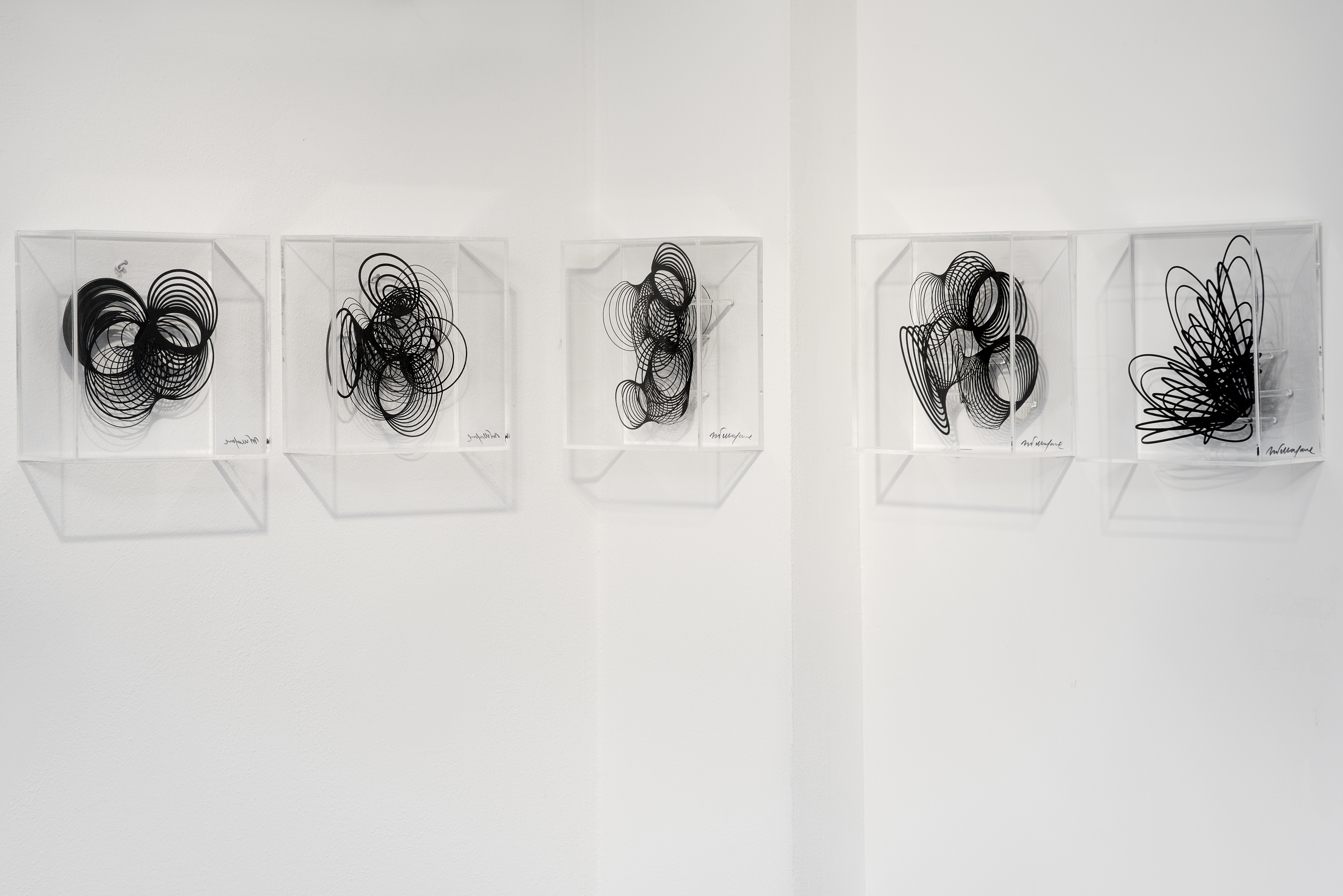




“¿Así que crees que puedes llamar cielo al infierno? ¿Azul firmamento al dolor?
¿Puedes llamar verde césped a un frío riel de acero? ¿Sonrisa a un velo? ¿Crees que puedes hacerlo? ”
“So, so you think you can tell Heaven from Hell, blue skies from pain. Can you tell a green field from a cold steel rail. A smile from a veil? Do you think you can tell?”
Pink Floyd. Wish You Were Here (1975)


